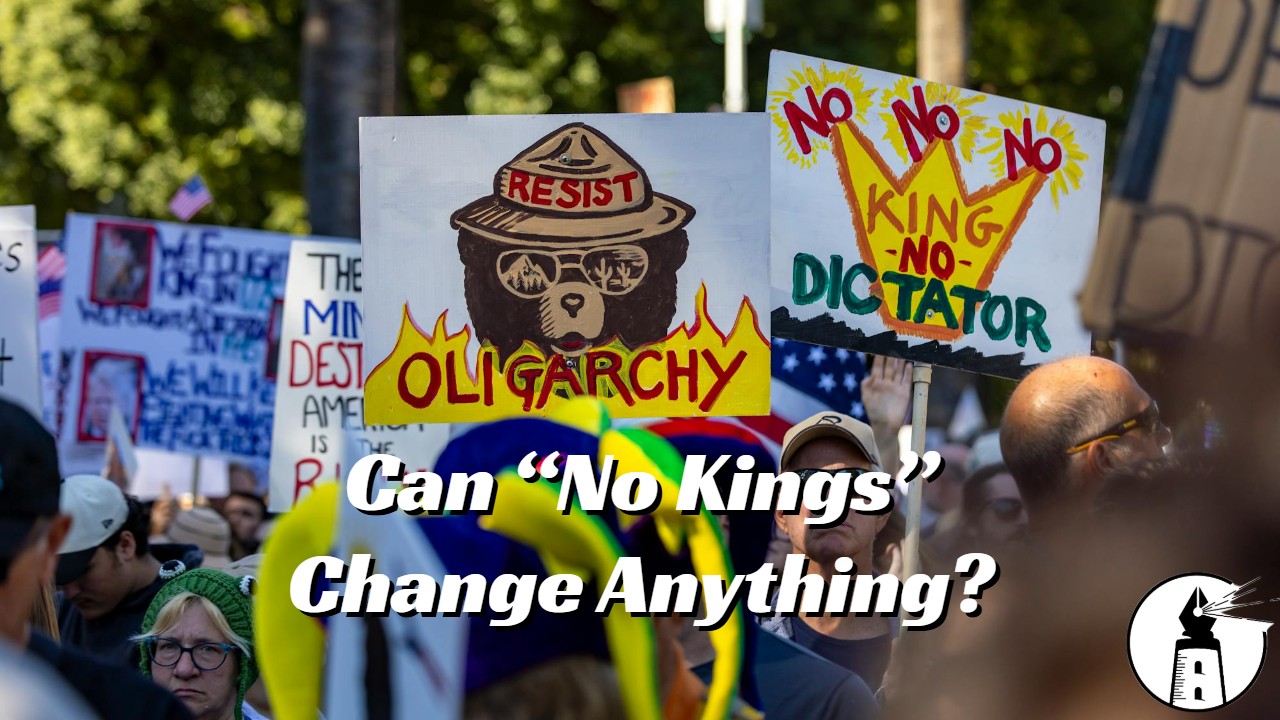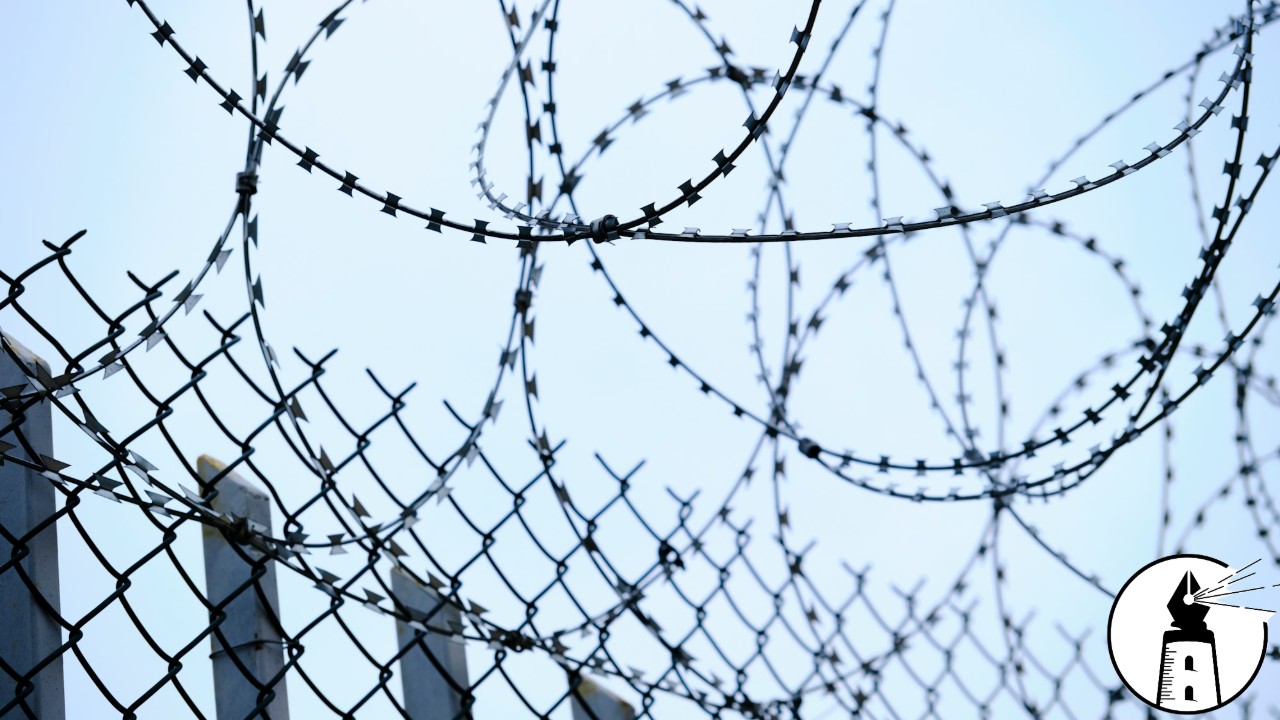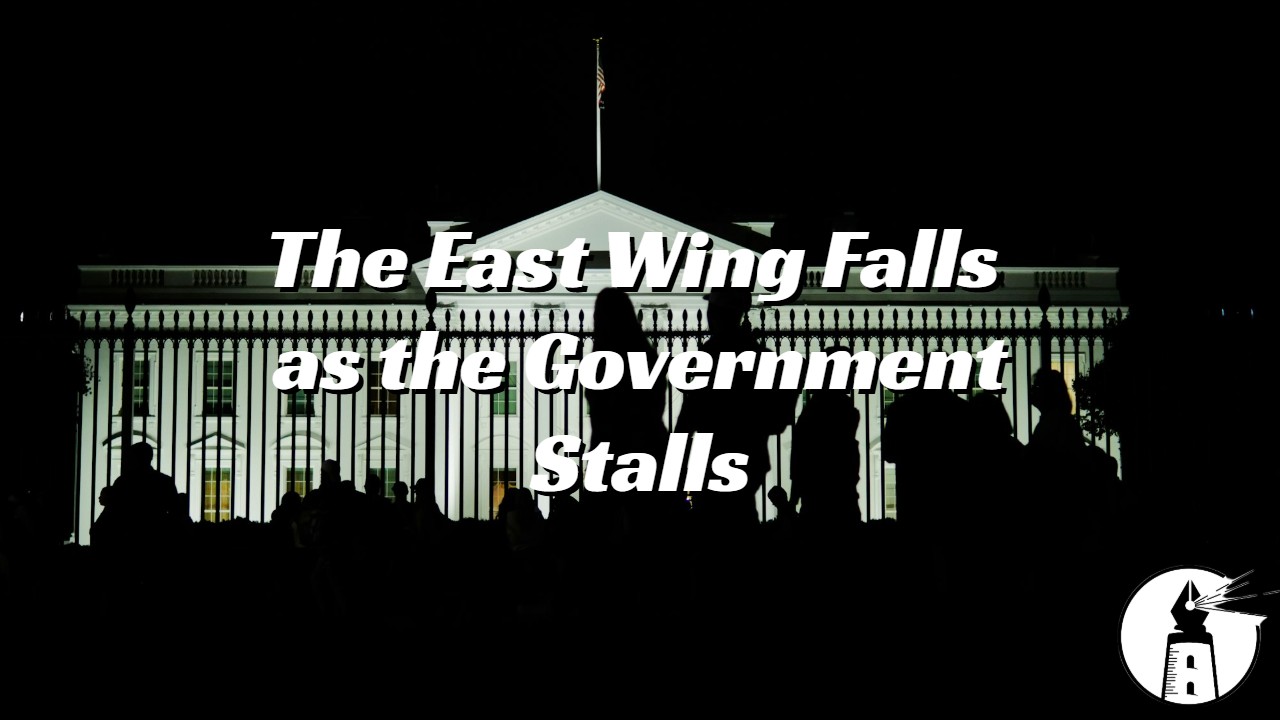On Saturday, October 18, 2025, “No Kings” demonstrations took place in all 50 states, with organizers reporting more than 2,700 events and a turnout they say exceeded 7 million people. Coverage from national outlets described large, peaceful crowds across major cities such as Washington, New York, Los Angeles, Chicago, and many smaller communities, making the day one of the largest coordinated protest efforts in recent U.S. history.
Organizers cast the message in constitutional terms: “America has no kings,” and political power rests with the public. Their site emphasized nonviolence and discouraged bringing weapons, and several local reports underscored a largely peaceful day of events.
Responses from right-wing leaders
President Trump dismissed the demonstrations as “very small” and “ineffective,” telling Fox News he is “not a king” and “works” for the country. He followed up by reposting an AI-generated clip on social media depicting himself as “King Trump” dumping sludge on protesters from a fighter jet, a video that also prompted criticism over unauthorized music use. Allies framed the clip as satire.
House Speaker Mike Johnson described the events as “hate America” rallies and linked attendees to antifa and a “pro-Hamas wing,” a characterization he defended in a Sunday interview. Other Republicans, including House Majority Whip Tom Emmer, used similar language in the days leading up to the protests, while Senator Roger Marshall suggested without evidence that the protests were funded by George Soros and even raised the prospect of calling out the National Guard. Reporting and commentary after the weekend pushed back on those claims, citing the overwhelmingly peaceful tenor of the day.
Vice President JD Vance and other allies publicly defended Trump’s AI posts as humor and political commentary, despite criticism that the videos spread misinformation and dehumanized demonstrators.
Were the protests effective?
Effectiveness can be assessed along a few axes.
Visibility and agenda-setting. By sheer scale, the movement dominated the national conversation over the weekend, placing its “no kings” framing at the center of coverage and forcing a response from the White House and congressional leaders. This satisfies the near-term goal of agenda-setting.
Public behavior and optics. With largely peaceful events noted across multiple states, participants avoided handing opponents images of widespread disorder. That undercuts claims that the events were inherently violent or anti-American and supports the movement’s nonviolent branding.
Counter-messaging environment. The right’s replies—labeling rallies as “hate America,” alleging extremist ties, or reducing the moment to trolling “satire”—were designed to delegitimize the protests and rally supporters. Such rebuttals may harden polarization, but they also signal that the protests were salient enough to demand a rapid, recurring response. Whether those attacks depress broader public sympathy or backfire remains an open question.
Policy impact and coalition building. Immediate policy changes are unlikely to follow a single day of action. Organizers and participants argued the protests were about momentum and sustaining civic pressure. The strategic test will be whether turnout converts into sustained organization, voter registration, legislative advocacy, and durable coalitions beyond a single news cycle.
Bottom line. The October 18 demonstrations were effective at visibility and narrative framing in the short term, and they largely succeeded at maintaining peaceful optics. Their long-term effectiveness will depend on whether organizers translate the moment into sustained political leverage and measurable outcomes on the issues that motivated attendees.
Further Reading:
- Millions across all 50 US states march in No Kings protests against Trump
- A peaceful day of No Kings protests across Oregon ends with a show of force in Portland
- Trump reacts to ‘No Kings’ protests by saying ‘I’m not a king, I work my ass off’
- Trump reposts AI-generated video of plane dumping sludge on No Kings protesters
- Johnson defends calling anti-Trump protests ‘hate America’ rallies
—By Greg Collier



